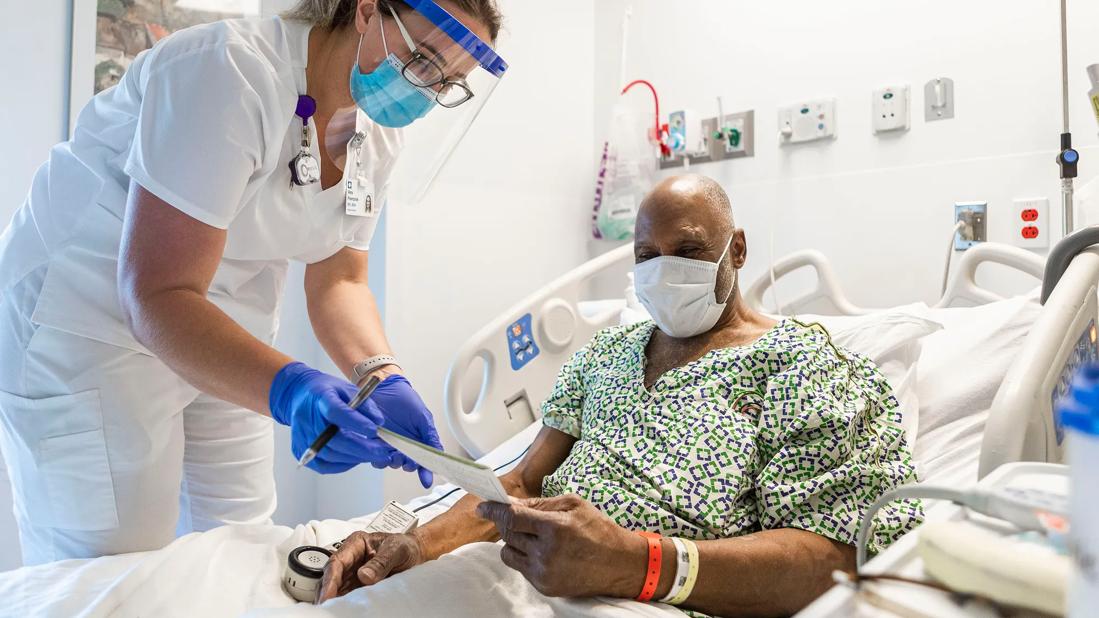Risk model is second in a suite of prediction tools for infected patients

Cleveland Clinic researchers have developed and validated a risk prediction model that can help physicians predict which patients who have recently tested positive for SARS-CoV-2 are at greatest risk for hospitalization for COVID-19.
Advertisement
Cleveland Clinic is a non-profit academic medical center. Advertising on our site helps support our mission. We do not endorse non-Cleveland Clinic products or services. Policy
The new model, whose development and validation were reported in PLOS One on August 11, is the second COVID-19-related nomogram developed by the research team, which is led by Lara Jehi, MD, Chief Research Information Officer at Cleveland Clinic, and Michael Kattan, PhD, Chair of the Department of Quantitative Health Sciences in Cleveland Clinic Lerner Research Institute. Their earlier prediction model forecasts an individual patient’s likelihood of testing positive for the virus.
“Ultimately, we want to create a suite of tools that physicians can use to help inform personalized care and resource allocation at many time points throughout a patient’s experience with COVID-19,” says Dr. Jehi, lead and corresponding author of the open-access paper reporting the new model.
The model was developed and validated using retrospective data from more than 4,500 patients who tested positive for COVID-19 at Cleveland Clinic locations in Northeast Ohio and Florida during a three-month period (early March to early June 2020). Cleveland Clinic data scientists used statistical algorithms to transform data from registry patients’ electronic medical records into the risk prediction model.
Comparing characteristics between patients who were and were not hospitalized due to COVID-19 revealed several previously undefined risk factors for hospitalization, including:
Advertisement
Dr. Kattan, an expert in developing and validating prediction models for medical decision-making, cautions that additional studies will be needed to further explore the association between ACE inhibitors and ARBs and hospitalization. “In our study, taking these drugs was only found to confer increased risk for hospitalization when run through univariable analysis, which means the observed association could be the result of confounding variables, like a preexisting condition,” he explains.
The team’s findings also revealed that patients presenting with a symptom complex including fever, shortness of breath, vomiting and fatigue were more likely to be hospitalized than those who did not experience this quadrumvirate of symptoms.
The study confirmed other associations previously well established in the literature, including higher risk of hospitalization among older people, men and patients with comorbidities such as diabetes and hypertension.
“Hospitalization can be used as an indicator of disease severity,” notes Dr. Jehi. “Understanding which patients are most likely to be admitted to the hospital for COVID-19-related symptoms and complications can help physicians decide not only how best to manage a patient’s care from the time of testing, but also how to allocate beds and other resources, like ventilators.”
The nomogram, which is freely available as an online risk calculator, was shown to be well calibrated and perform well, offering substantially better predictions than using no model at all. The model was also shown to perform well in different geographic regions, as data from both Ohio and Florida were used in its development.
Advertisement
The researchers note that in addition to further interrogating the association between hospitalization and ACE inhibitor/ARB therapy, it will be important to study on a pathogenic level how the identified risk factors confer increased hospitalization risk. They also emphasize that their findings offer only associations and do not suggest that these factors are causative.
The study was funded in part by the National Institutes of Health through the Clinical and Translational Science Collaborative of Cleveland.
Advertisement
Advertisement

Patients report improved sense of smell and taste

Clinicians who are accustomed to uncertainty can do well by patients

Unique skin changes can occur after infection or vaccine

Cleveland Clinic analysis suggests that obtaining care for the virus might reveal a previously undiagnosed condition

As the pandemic evolves, rheumatologists must continue to be mindful of most vulnerable patients

Early results suggest positive outcomes from COVID-19 PrEP treatment

Could the virus have caused the condition or triggered previously undiagnosed disease?

Five categories of cutaneous abnormalities are associated with COVID-19